NSF NCAR Public Tours
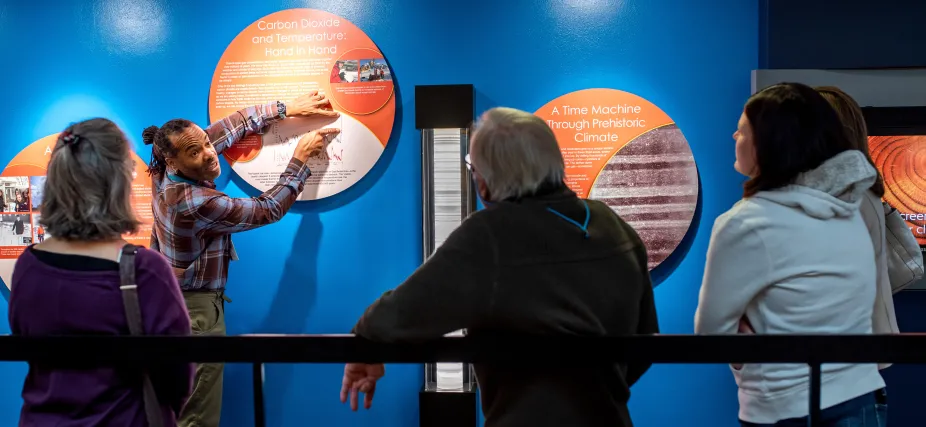
Our School and Public Programs staff are on-site to answer your questions and assist you on weekdays (Monday-Friday) during business hours (9:00 am - 4:00 pm MT). Our public and private tours are best suited for groups of adults. Kids are welcome, but the content is best for students above 5th grade.

Public Noon Tours
Available Monday, Wednesday, and Friday from 12:00 pm (noon) – 1:00 pm MT (excluding federal holidays).
Meet up with our tour guides in the lobby to learn about atmospheric science and current research being conducted at NSF NCAR. No reservations are necessary, and the tour is free. If you would like to let us know you are coming for a Public Noon Tour, you can reserve a ticket in advance through Eventbrite .
NSF NCAR Public Tour App
The UCAR Center for Science Education's NSF NCAR Tour App provides the perfect opportunity to explore the NSF NCAR Mesa Lab Visitor Center at your own pace. The app works on all website browsers as well as on both Android and iOS devices. iPads are also available to check out from the Front Desk during weekdays between 8:00 am and 4:00 pm MT. Free wifi is available onsite through the "UCAR Visitor" network.
La aplicación para la visita guiada de NCAR del Centro para la Educación Científica de UCAR te ofrece una oportunidad perfecta para explorar el centro de visitantes del laboratorio Mesa de NCAR a tu propio ritmo.
Private Group Tours
Private group tours are offered for groups of 10-30 people. Private group tours fill up on a first-come, first-serve basis. We take reservations up to 8 months in advance and require private tour requests to be submitted with at least 3 weeks' notice. To make a reservation request, fill out our In-Person Program Request Form . Someone will get in touch with you within 7 business days.
Sensory Tour
The School and Public Programs Team developed a Sensory Tour for groups with blind or low vision visitors. This 2-hour tour is designed to teach visitors about the history and science of NSF NCAR using audio and tactile engagement as tools. To inquire about this exclusive experience, please call 303.497.2401 or email the School and Public Programs Team . Please note that we need at least four weeks advanced notice before your visit in order to prepare this program.
Tour Social Narrative
Set expectations for our tour by reviewing our NSF NCAR Public and Private Tour Social Narrative document. This tool has been developed for visitors with ASD or other associated disabilities, but can be used by anyone!
Explore on Your Own
The NSF NCAR Mesa Lab Visitor Center is free to visit, both as a walk-in and for any programs or tours. We are open 363 days a year*, every day of the week for public walk-ins on weekdays from 8:00 am – 5:00 pm MT and on weekends and holidays from 9:00 am – 4:00 pm MT.
Review the NSF NCAR Visitor Map before visiting or borrow one on-site to help navigate through the NSF NCAR Visitor Center. Visitors are welcome to enjoy the exhibits on their own during public hours. Don't forget to check out the scenic Walter Orr Roberts Weather Trail located behind the Mesa Lab!
*The Visitor Center is closed 2 days a year for annual maintenance, and the dates are announced well in advance on our website.
- Field Trips
To book a PreK-12 field trip, please visit our in-person field trips page to learn about our Learning Labs. We can also drop directly into your classroom with a virtual field trip .
Help us improve our tours and exhibits! If you've visited the NCAR Visitor Center, please fill out our NSF NCAR Mesa Lab Visitor Survey to provide feedback.
If you have any questions, please email or call (303.497.2401) the School and Public Programs team.
- Explore NCAR: Live Virtual Tours
- Self-Guided 360 Virtual Visit
Related Links
- Plan Your Trip
- Things To Know
- Accessibility
Your browser is not supported for this experience. We recommend using Chrome, Firefox, Edge, or Safari.
Hotel Deals Expiring Soon!

#VisitBoulder

Get Inspiration For Your Next Adventure

Stay Up-to-date with the Latest News & Deals
National Laboratories in Boulder
It's not unusual on any given day to hear Boulder mentioned in national news coverage of groundbreaking scientific research. Punctuated by acronyms such as NCAR, NIST and NOAA, such stories reveal that Boulder's national laboratories, including the National Center for Atmospheric Research (NCAR) , National Oceanic and Atmospheric Administration (NOAA) , National Institute of Standards and Technology (NIST) , the Institute for Telecommunication Sciences (ITS) , the Cooperative Institute for Research in Environmental Sciences (CIRES) and others, have been busy making some of the world's most important discoveries about Earth and beyond.
Two of Boulder's national labs offer tours to the public.
NCAR Visits and Tours
The presence of these prodigious institutions not only raises Boulder's collective IQ, but also provides visitors with a few unique and fun learning opportunities. NCAR, whose geometric, rust-colored buildings are nestled against the Flatirons , offers an exceptional visitor program that includes tours, hiking trails, a theater showing educational films, art galleries and hands-on climate and weather exhibits. See some of the world's largest and most advanced computers, touch a simulated tornado and take in the gorgeous views of Boulder.

The NCAR visitor center is open 363 days a year. Visit weekdays 8am-5pm or weekends and holidays 9am-4pm.
NCAR tours are available Mon., Wed., and Fri at noon.* Meet your tour guide in the lobby to learn about atmospheric science and current research being conducted at NCAR. No reservations are necessary and the tour is free. Learn more. *Guided Mon., Wed., and Fri. noon Tours will not be offered on federal holidays.
NOAA's tours take place at 1pm each Tuesday and include stops at several working portions of the laboratory where you'll be the first to learn the national weather forecast. A high point of the tour is the Science on a Sphere stop, which involves a very cool and very large animated globe. At this time visitors to NOAA Boulder need to be US citizens or permanent residents with a valid green card. Learn more.

NIST , which houses an atomic clock that is the standard for official time in the United States, does not currently offer tours to the public. Professional and educational groups can inquire about arranged tours with several weeks of advance notice.

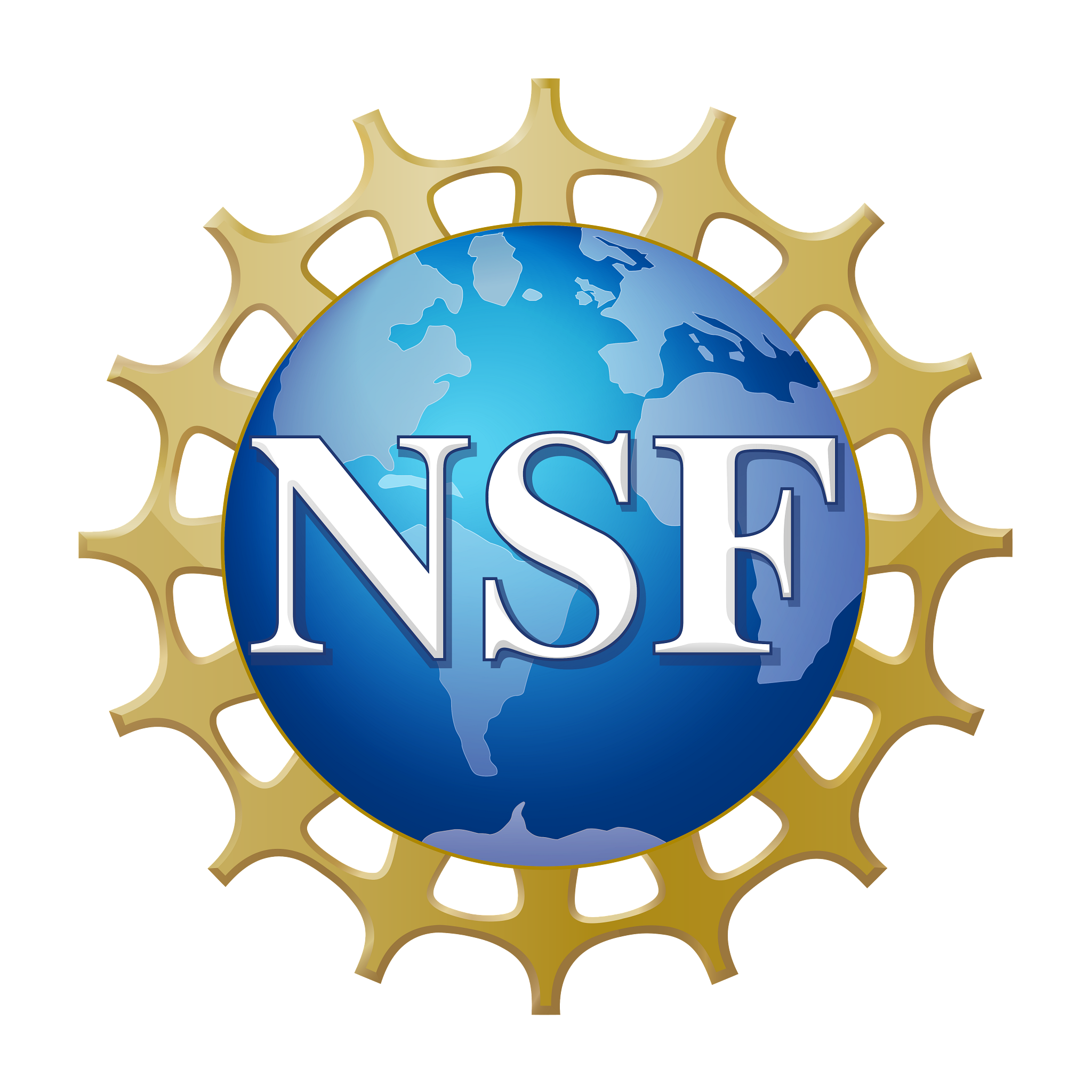
- NSF NCAR Home
Beyond Boulder: NCAR’s virtual tours allow a broader audience to experience its exhibits
Anyone can experience the wonder of the mesa lab and supercomputing facility from afar.
Dec 12, 2022 - by Laura Snider
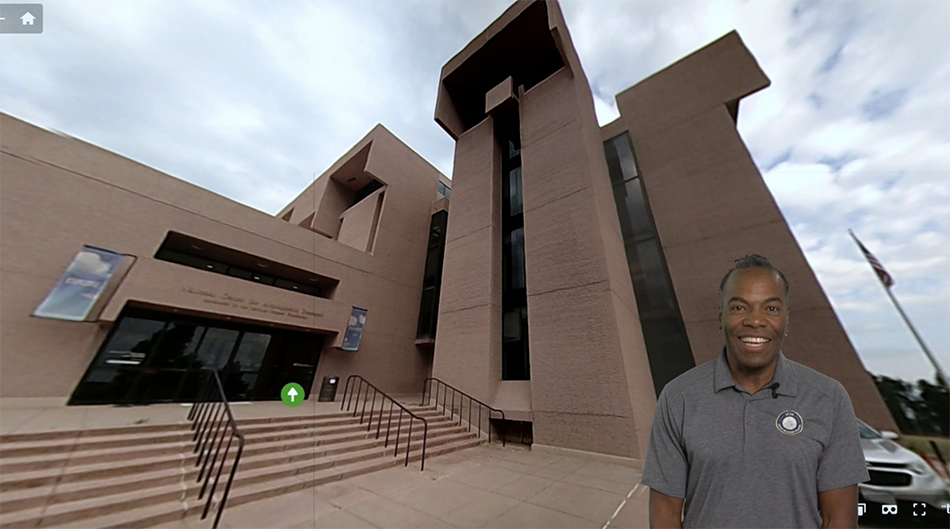
Science educator Tim Barnes leads a virtual tour at the Mesa Lab. Anyone can sign up to be a part of a guided virtual tour or explore using the 360 app on their own. (Image: SciEd)
Long touted as a top activity for visitors to the Boulder, Colorado, area, the weather and climate exhibits at the National Center for Atmospheric Research (NCAR) typically drew tens of thousands of people a year before the COVID-19 pandemic forced the exhibits to close.
The closures, however, came with a silver lining. The pandemic gave staff at the University Corporation for Atmospheric Research (UCAR) Center for Science Education (SciEd) the time and additional motivation to create a virtual tour web app that allows anyone from anywhere to experience the excitement of NCAR, both at the iconic Mesa Lab in Boulder and at the NCAR-Wyoming Supercomputing Center (NWSC) in Cheyenne, in a 360-degree virtual environment.
While the in-person exhibits at the Mesa Lab recently reopened to the public, the virtual tour apps remain an important priority for the SciEd team. Since the apps were launched, SciEd continues to add new content and is currently working on the ability for virtual guests to take a “stroll” on the breathtaking Walter Orr Roberts interpretive weather trail that sits behind the Mesa Lab, a feature they plan to launch in the spring. Now, UCAR SciEd is seeking feedback on the virtual tours through a survey of app users.
“We’re trying to figure out what content people like best,” said Katie Wolfson, SciEd’s School and Public Programs Manager. “Should we add more videos? More augmented reality? Which features are the most engaging?”
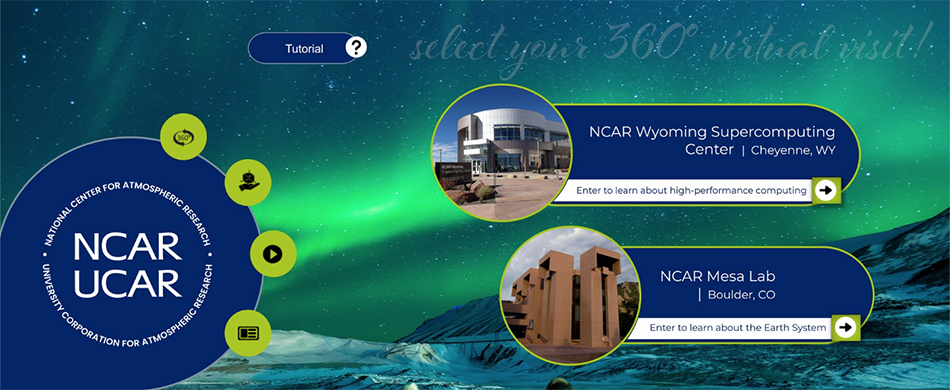
The physical exhibits at the Mesa Lab have long allowed in-person visitors to get a taste for vital science being undertaken at NCAR. Exhibit areas focus on weather, climate, and the Sun-Earth connection, as well as providing an inside look at NCAR-facilitated airborne field campaigns and the history of the lab’s unique architecture. The physical exhibits at the NWSC highlight the vast power of supercomputing and its importance for investigating the complex connections in the Earth system.
In the virtual tour app, visitors can move through all of the exhibits at both locations. While they can’t interact physically with the displays, the rich content offered online gives them a unique experience, in some cases above and beyond what can be seen in person. For example, virtual visitors can rotate and spin objects that in-person visitors can only see mounted in a fixed position. This includes a dropsonde — an instrument dropped into hurricanes to collect data used to improve storm forecast — and a satellite that collects atmospheric data by measuring the bend in GPS signal.
Visitors can also tune into a webcast and take a virtual tour led by Wolfson and her SciEd colleague Tim Barnes. Hundreds of people have participated in the facilitated virtual tours, which are part of a broader slate of virtual offerings that include Meet the Experts Q&A sessions with scientists and virtual field trips for K-12 groups. Since the pandemic began, these live virtual programs have reached 37 states and 13 countries.
“Our virtual strategy has allowed us to continue to engage the public and actually reach more people in more places,” said Emily Snode-Brenneman, a member of the SciEd team. “We are excited to have re-opened our Boulder-based exhibits to the public, but we have no plans to stop our virtual programming. In fact, we plan to keep expanding the content so people from all over have the opportunity to experience NCAR.”
Anyone can sign up for a public tour, private group tour, or virtual field trip on the SciEd website .
Take the survey!
Once you’ve had a chance to explore the virtual tour, let us know what you think! Look “down” towards your feet for a link to the survey (or go directly there ) and share your thoughts!
See all News
David Hosansky Media Relations Manager 303-497-8611
Education + Outreach ,
Related News
Moon Tree descendant lands at NSF NCAR
Super Science Saturday returns: Nov. 4
NCAR redesigns visitor center at Wyoming supercomputing facility
NWSC Visitor Center: All ages welcome!

Use this form to schedule a visit .
The Visitor Center at the NCAR-Wyoming Supercomputing Center (NWSC) in Cheyenne, Wyoming, offers informative tours and exhibits about weather, climate, supercomputing, and the broad spectrum of atmospheric research at a world-class science laboratory.
Learn about current Earth system science research spanning our planet's changing climate to the genesis of severe weather phenomena. Find out about computational science and see one of the fastest supercomputers in existence today.
Virtual tours
A virtual field trip may be a great option for remote students to learn about Wyoming's supercomputer. The virtual tour is conducted via Google Meet link, which joins your classroom to our docent in a live video tour. Simply click a link to join the video call.
Technology requirements: Chrome browser, webcam, speakers, internet.
Use this form to schedule a tour .
Guided tours
Want to see a supercomputer up close? Our docent provides a personalized tour to our supercomputer and the facility that keeps it running smoothly. You must be 9th grade or older to attend a guided tour. Tours may last from 45-90 minutes and require continuous standing and walking, including several flights of stairs. Appropriate attire and footwear are required to tour the facility; no open-toed shoes or high heels. Maximum tour size is 60 individuals.
We offer private, guided tours at a date and time convenient for your group. Please review the following information and choose an option that best fits your interests, then use this form to schedule a tour .
Student or youth group
Field trips to the NWSC are available to school, camp, club, homeschool and other youth groups Monday through Friday throughout the year. The typical field trip includes a short tour into the supercomputer room (provided the attendees are 9th grade or older) followed by exploring the interactive exhibits on your own in the Visitor Center. In the event your group is younger than 9th grade or older, our docent may be able to provide a presentation to compliment the hands-on exhibits and science activities. Our goal is to meaningfully engage students in science learning.
Private tours
Private tours are perfect for business groups, community organizations, and other non-school specific groups. Private tours can be arranged Monday through Friday throughout the year. The Visitor Center contains a self-guided tour of interactive exhibits, which is generally not staffed, in addition to a docent-led tour of the facility. While people of all ages are welcome to explore the Visitor Center, a guided tour into the supercomputer room requires the attendees to be 9th grade or older.
Cancellations
To cancel a confirmed field trip, please contact the scheduler at least two weeks before your confirmed date.
Chaperone guidelines
- Stay with your assigned students at all times. Make sure that they know this expectation as well.
- Instruct all your students to go immediately to the NWSC Security Desk if lost or separated from the group. The security staff will ensure they are escorted back to your group promptly.
- Students in middle school or younger are to be escorted to the restrooms.
- Please turn off or mute your cell phone during the field trip as a courtesy to the NWSC staff.
- Please help students use the NWSC’s recycling and trash bins.
- Please model respectful behavior.
Student guidelines
- Enter the building quietly and wait while your teacher or event leader signs in with the security staff.
- Because the NWSC is a place of business, please use inside voices at all times both inside and outside the facility.
- Always walk while inside the facility.
- Stay with your chaperone and group throughout the visit. If you are separated from your group, please go immediately to the NWSC Security Desk.
- No climbing, running, jumping, or playing on the exhibits or benches.
Other guidelines
- The facility is a smoke-free and vape-free environment.
- The facility is under surveillance.
- The NWSC is not responsible for lost or stolen items.
- The NWSC is not responsible for damage to vehicles in the parking lot.
Tour of National Center for Atmospheric Research (NCAR)
This event already ended.

- When: Thu, Apr 25, 2024 from 01:00 PM to 02:00 PM
- Committee: Rocky Mountain Over the Hill Gang
- Group: Denver
- Add to Calendar: iCal
Nestled below the flatirons in Boulder, the NCAR building was designed by the noted architect, IM Pei. Today it remains a internationally renowned state of the art scientific research center focusing on the earth sciences such as weather, climate, air and water quality, and sun and space weather. It is funded primarily by the U.S. National Science Foundation, and managed by the University Corporation for Atmospheric Research.
There will be an optional lunch at your expense, before the tour, beginning around noon at the on-site Mesa Lab Cafe. https://scied.ucar.edu/visit/things-to-know#Food.
There is no cost associated with this tour. There is plenty of parking in the NCAR parking lot. The facility is surrounded by lovely hiking trails, including the Walter Orr Roberts Trail, a .9 mile educational trail named in honor of the founding earth scientist, Dr. Walter Roberts.
With a friendly community, knowledgeable instructors and trip leaders, and a century-long legacy of adventure and education, the Colorado Mountain Club is the perfect way to explore Colorado
- Privacy Policy
- Terms & Conditions
- Bookseller Info
- Colorado Mountain Club
Connect with the CMC Community
© Colorado Mountain Club, a 501(c)(3) nonprofit organization. Tax ID: 84-0410760.
CMC Store is a registered trademark of The Colorado Mountain Club©, a 501(c)(3) nonprofit organization. Tax ID: 84-0410760.
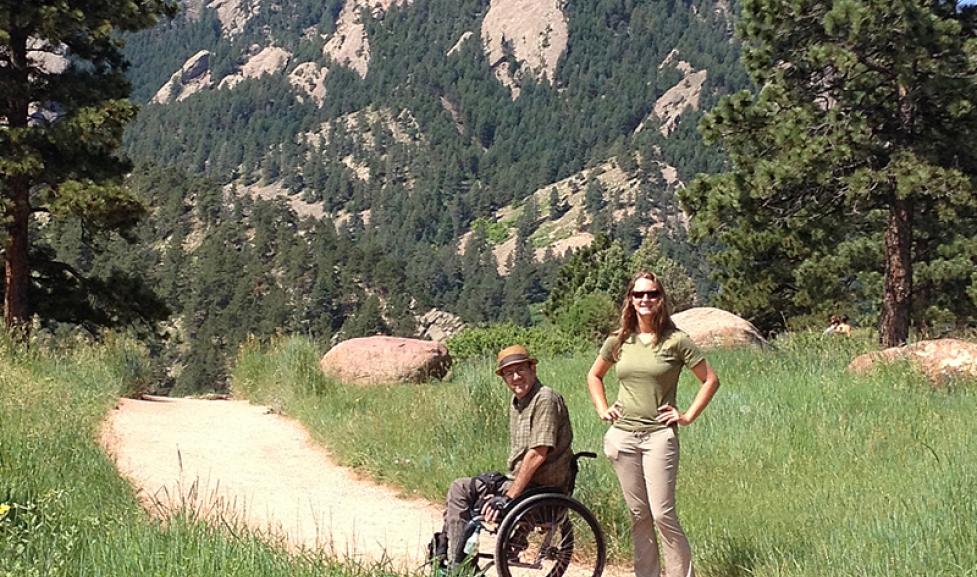
Two hikers on NCAR Trail by OSMP Staff
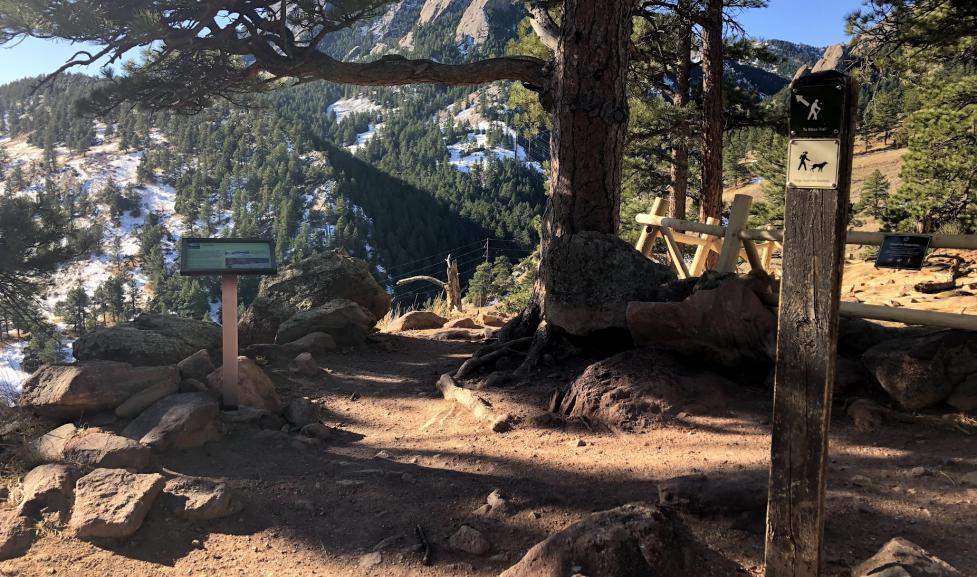
NCAR Trail by OSMP Staff
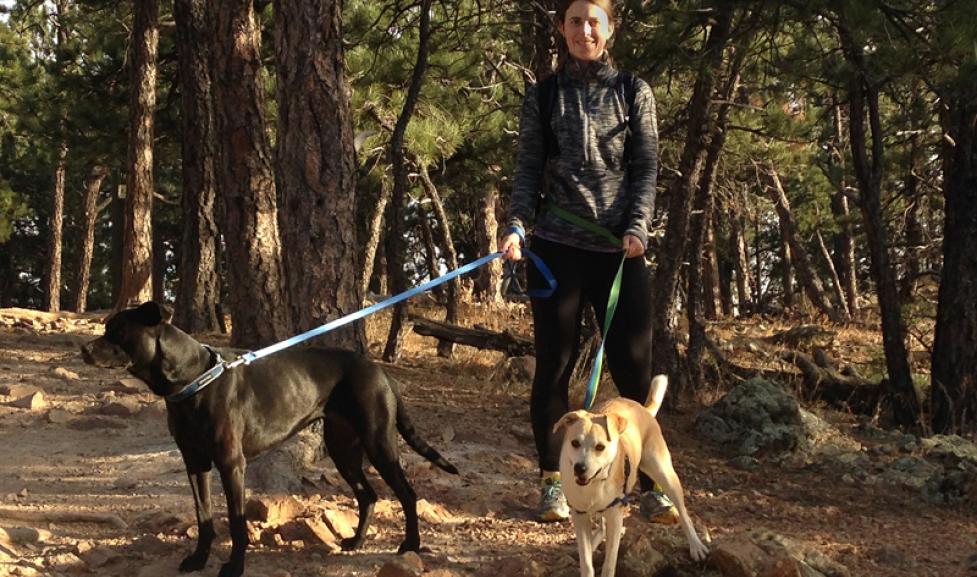
NCAR Trail by Lisa Dierauf
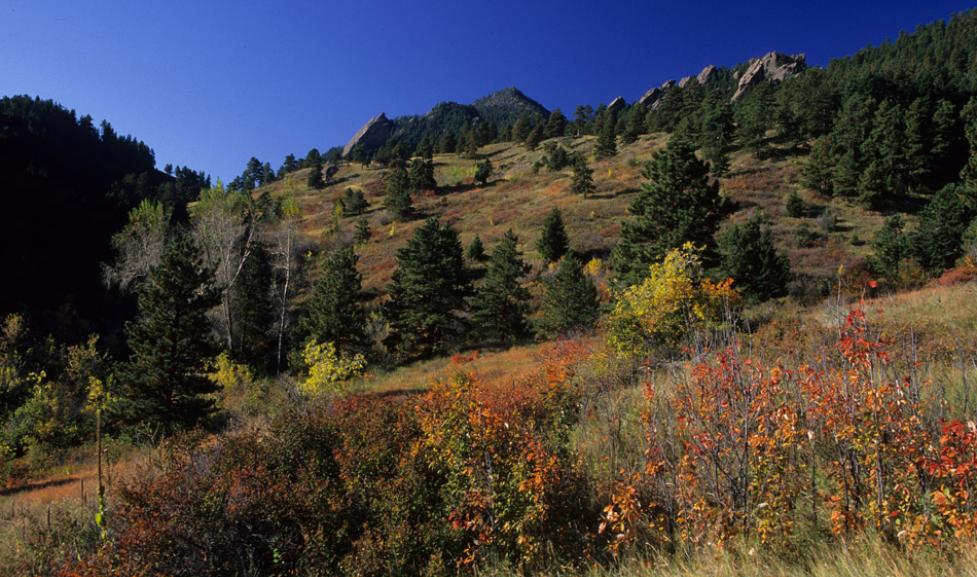
NCAR in fall by Ann Duncan
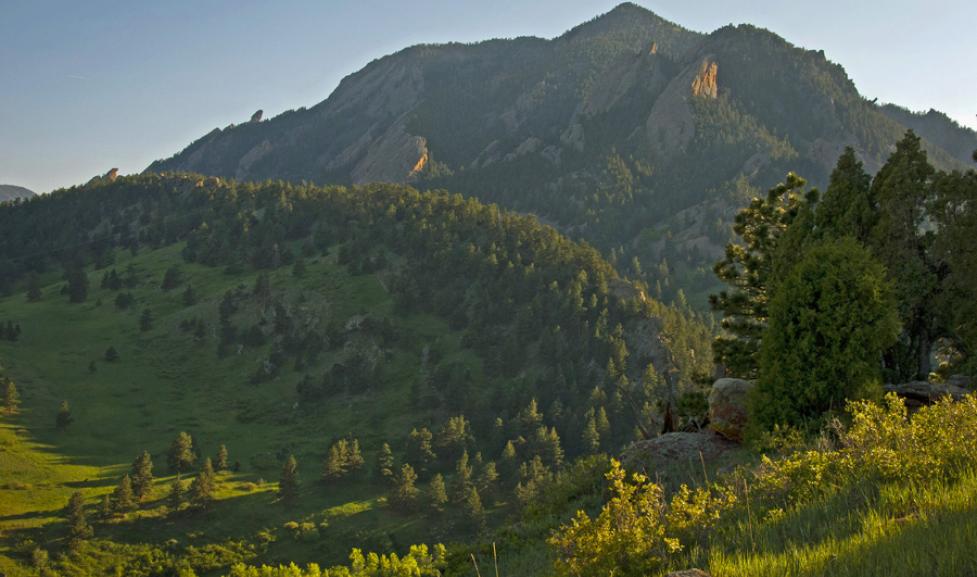
View south from NCAR by Jack Sasson
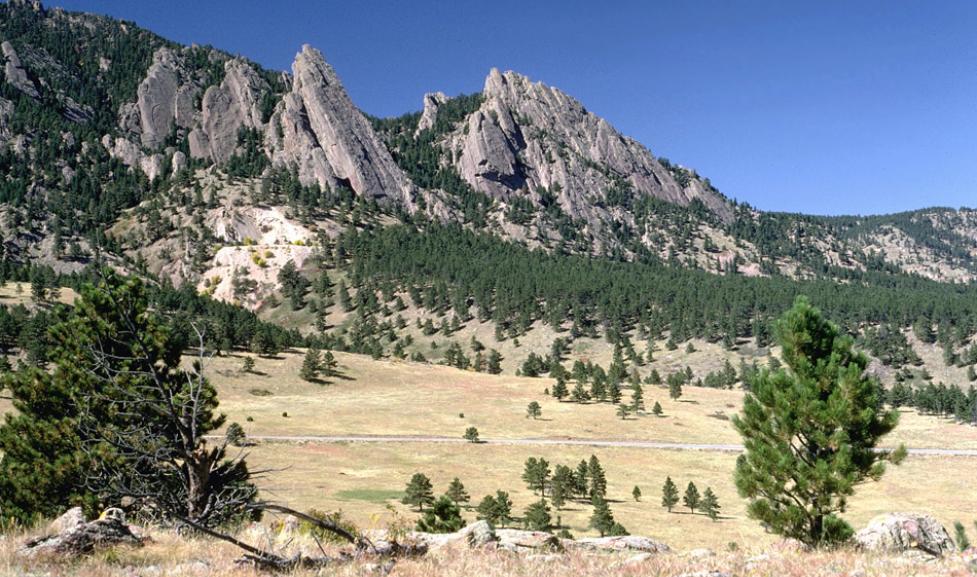
View from NCAR by Frank Beck
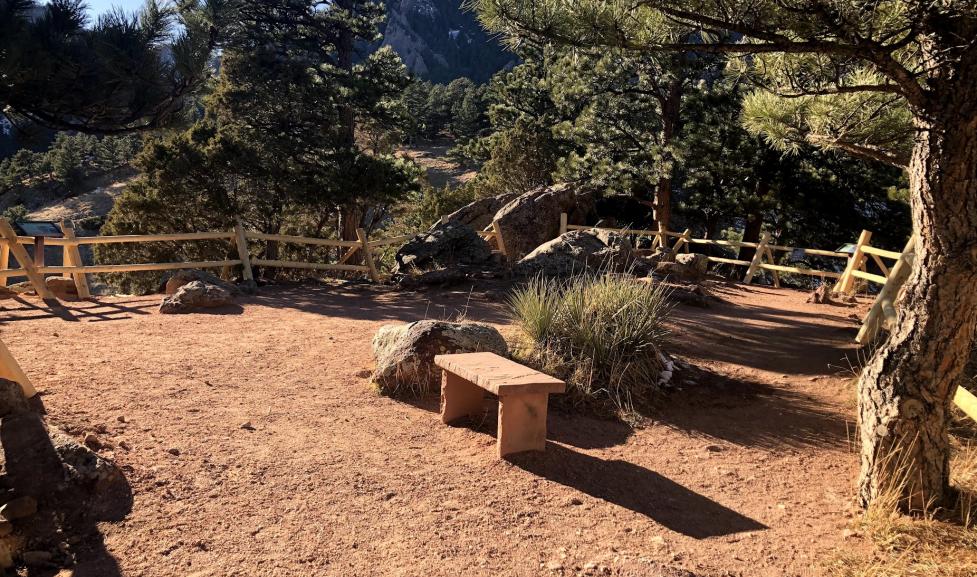
View south from NCAR by OSMP Staff
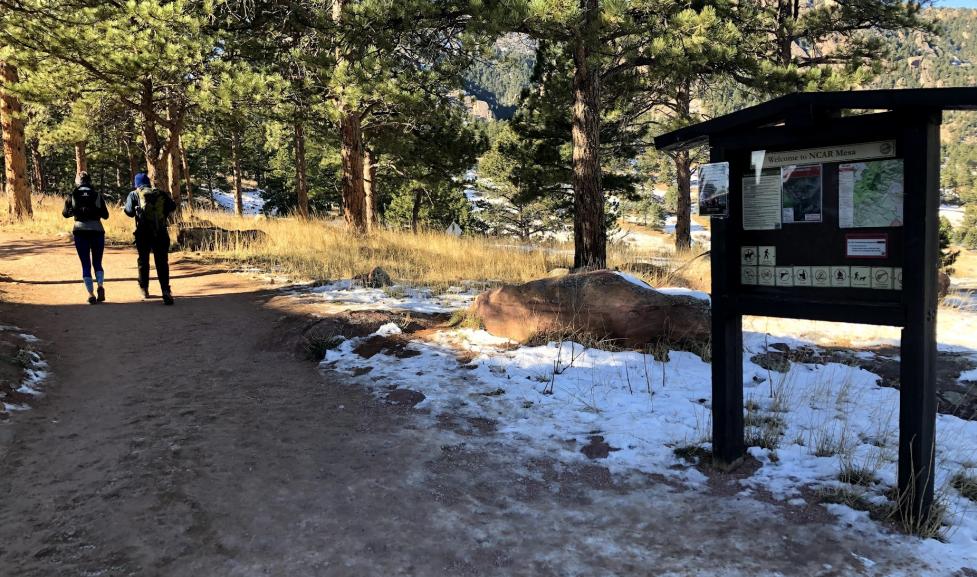
Beginning of NCAR Trail by OSMP Staff
Trail Information
Trail description.
The NCAR Trail travels west on a small mesa, drops to a broad saddle, then climbs another ridge to a water tank, before dropping into a valley to end at Mesa Trail. The National Center for Atmospheric Research (NCAR) has placed a series of interpretive signs about weather along the top portion. This rolling trail offers splendid views of the Flatirons and the surrounding open space area.
Accessibility
This trail is identified as being mobility-friendly. See the Visitors Experiencing Disabilities Page for trail details.
Related Resources
- OSMP Trail Map
- Rules & Regulations
- Trail and Area Closures
- Boulder Area Trails App
- Trail Elevation & Difficulty Info
- Dogs on OSMP
- Biking on OSMP
- Visitors Experiencing Disabilities
- Fishing on OSMP
- Equestrians on OSMP
- Climbing on OSMP
Nearby Trailheads
Related trails.

NCAR - Table Mesa


Mallory Cave
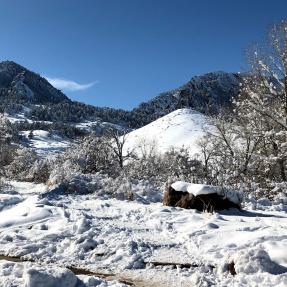
NCAR - Bear Canyon

- NSF NCAR Home
We're open to the public
Pay us a visit, and don't forget the kids.
The exhibits at our two visitor centers allow the public to explore weather, climate, the Sun-Earth connection, and the importance of supercomputing, a major ingredient pushing our scientific understanding even further.
- For the public
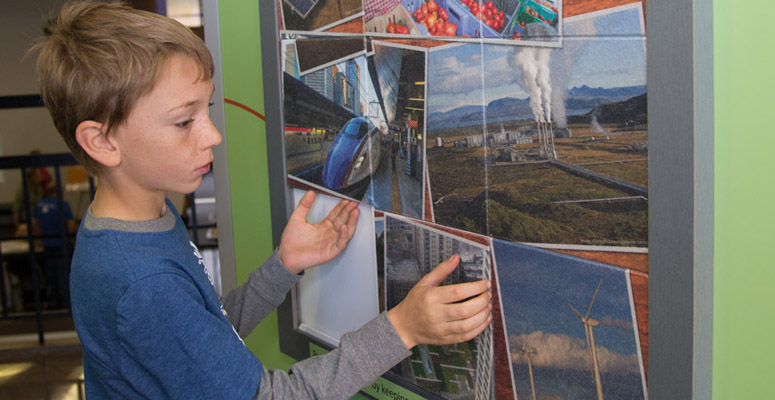
Our visitor centers
Drop by and see us at one of our two visitor centers, located at our Mesa Lab in Boulder, Colorado, and at the NCAR-Wyoming Supercomputing Center in Cheyenne, Wyoming.
Science | St. Vrain students to plant a moon tree at NCAR
Share this:.
- Click to share on Facebook (Opens in new window)
- Click to share on Reddit (Opens in new window)
- Click to share on Twitter (Opens in new window)
- Boulder Area
- University of Colorado
- Business Spotlight
- Science & Environment

St. Vrain Valley School District students will help plant a “moon tree” Friday at the National Center for Atmospheric Research Mesa Lab, 1850 Table Mesa Drive, in Boulder, to celebrate Arbor Day and to celebrate the 20-year anniversary of a program to get students engaged in climate science.
The original Apollo-era space mission moon trees came from seeds that that were carried by astronauts in an orbit around the moon in 1971. Students will view a documentary about the moon trees and talk to the filmmaker. They’ll hear from leaders at the lab and a CSU Extension office horticulturist about science outreach and student engagement. Students also will get a tour of the facility.
More in Science

SUBSCRIBER ONLY
Local news | natural selections: houndstongue is a noxious, poisonous weed with nasty seeds and pretty flowers.

Local News | What to expect in Boulder County with Monday’s solar eclipse

Local News | Natural Selections: Mountain dryad is adapted to high elevation, cold and windy sites
Are you and your feline friend on the lookout for a new place to call home in Boulder, Colorado? Look...
When the time comes to bid farewell to a loved one, the support of a compassionate and professional funeral service...
Longmont, Colorado, nestled at the foothills of the Rocky Mountains, offers a blend of natural beauty, vibrant culture, and community...
In Loveland, Colorado, leather goods are not just accessories; they are a statement of style and durability. However, even the...
In the heart of the High Plains, where the soil breathes life into every seed planted, lies a trusted ally...
- Share full article
Advertisement
Supported by
A Dull Tour Of Moscow —In Car 141
By Theodore Shabad Special to The New York Times
- April 3, 1972
MOSCOW, April 3—A twohour tour in a police patrol car through a quiet Moscow residential neighborhood can be a dull affair.
On a recent evening, as Car 141 of the 109th Precinct moved at 15 miles an hour through the broad, virtually deserted streets of the Sokol district of northwest Moscow, there were no idle youths lurking in doorways, no street fights, no automobile accidents.
“We are on the lookout mainly for drunks and other potential troublemakers,” said Lieut. Col. Aleksandr F. Petrikov, a borough police official who accompanied a visitor on the inspection tour.
With them in the back seat of the police car was a reporter from Novosti press agency, which had arranged the ride as part of a briefing on the Moscow police, or the Militia as it is known here.
Shops Are Checked
The senior patrolman, First Sgt. Sergei I. Zimin, 50 years old, scanned the large apartment blocks on both sides of the road for any indications of trouble. All was quiet.
From time to time, the driver, Sgt. Viktor A. Shelgunov, 37, brought the car to a halt at designated stopping places. While he stayed near the car to listen for radio ;calls, his colleague walked about for a. few minutes to check shops and other establishments.
“See how he looks right and left,” Colonel Petrikov said, keeping up a running commentary. “He looks at every house to make sure all is quiet. If anything ever happens, he can immediately call in either of the two other cars we have patrolling in this area.”
The patrolmen kept a particularly vigilant eye on the few cafes and restaurants along the route. These are points of particular concern to the Moscow police in their fight against drunkenness and the wide range of petty crime that goes under the heading of hooliganism.
Streets Considered Safe
Moscow does not appear to be troubled with muggings, assaults and similar forms of street crime that pose a problem in New York, for example. Although the Soviet press does not report crime except on a selective basis, there appears to be a consensus among Muscovites that their streets are generally safe at night.
Most Soviet citizens have jobs, with women making up half of the labor force, and the early‐to‐bed and early‐torise habits appear to be a significant factor in keeping people off the streets late at night.
It was 9 P.M. as the police car cruised through the Sokol neighborhood, and the few persons who were on the street seemed to be on their way home. ,
Long silences on the car radio linking the patrol car with the precinct house were punCtuated by occasional test calls.
“Belgorod,” Sergeant Zimin said in a quiet voice, “This is 141. Do you read me? Over.”
“141, this is Belgorod. I read you,” came the sonorous reply from the station house, using the name of a Russian city as its call sign.
Finally there was a call for ‘ help, and Car 141 sped off to the address. A group of citizen policemen patrolling on foot had detained two young men on the complaint of a young woman.
Wanted to Get Acquainted’
“They tried to take my hand,” the woman said.
“We did not mean any harm, we just wanted to get acquainted,” one of the two sought to explain. The other appeared to be too frightened to talk.
Although the young woman declined to press charges, the two patrolmen drove the youths to the precinct house while the visitors waited at a street corner.
“They will probably Just check out their identity, place of employment and so forth,” Colonel Petrikov explained.
“We are strong on crime prevention here, and any in cident like this is reported to the employer and co‐workers. They will see to it that it does not recur.”
The evening operation at the 109th Precinct appeared to be limited to its three car patrols.
Asked whether foot patrolmen were used in the area in addition to the citizen volunteers, Colonel Petrikov said, “What for, there would be nothing for them to do.”
A tour of the station house revealed mainly neat and empty offices, a room for briefings, lectures and social events and a weapons room in which a sand‐filled panel along a wall bore a sign reading, “Point your gun here when loading and unloading.”
Colonel Petrikov said that each precinct had a resident officer who was charged with public relations, lectures in community centers and schools and informal followups of minor incidents.
- What's My Car Worth?
- Buyer's Guide
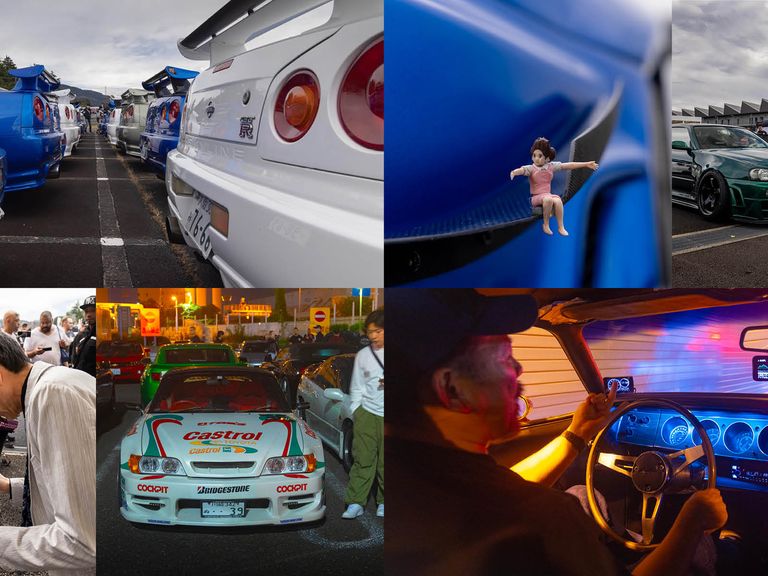
A Fast Tour of Japan's Car Culture
We leave it up to the chef on a tour of car culture in Japan, and we're not disappointed.
From the May/June issue of Car and Driver.
Of all the things I expected to learn in Japan, the size of the spiders wasn't on the list. "Really big," warned photographer Mike Shaffer, an American expat living in Tokyo, as we boarded a train headed for Fuji Speedway. "I'm afraid of spiders," he added. Three train rides and one bus trip later, I regret to inform arachnophobes that Shaffer's assessment is true. On the walk to the speedway entrance, we saw some creatures bigger than a Honda N-Box. The walk of horror was worth it, though, because once we got to the paddock, we were rewarded with hundreds of Nissan GT-Rs, Japan's most coveted car.
We were there for R's Meeting, an annual gathering of the Nissan muscle cars. There were Skylines visible to the skyline, including long-forbidden '90s models, unavailable to U.S. collectors until recently due to import laws. At home, it's rare to see a mid-'90s fourth-generation Skyline GT-R R33 or a turn-of-the-century fifth-gen R34. At R's Meeting, that's just the overflow parking lot. Inside were even rarer cars: GT-Rs turned to artworks, with anime wraps, candy paint jobs over etched metal, and bare carbon fiber, or thrumming with track focus, like NISMO models with full race tunes and intricate aftermarket bodywork. An R34 in a color-changing hue shifted from pomegranate to gloaming blue as we walked by. Owners personalize their cars—we saw rhinestone badges, louvered hoods, and even a glued-on plastic surfer on a carbon-fiber wheel spat—and let the mods speak for them. Nobody was hanging around their vehicle. Instead, they were strolling the midway, admiring the extreme customizations from well-known tuners or stocking up on beer and fried snacks like takoyaki and gyoza on their way to the grandstands to watch racing with the dramatic backdrop of snowcapped Mount Fuji.
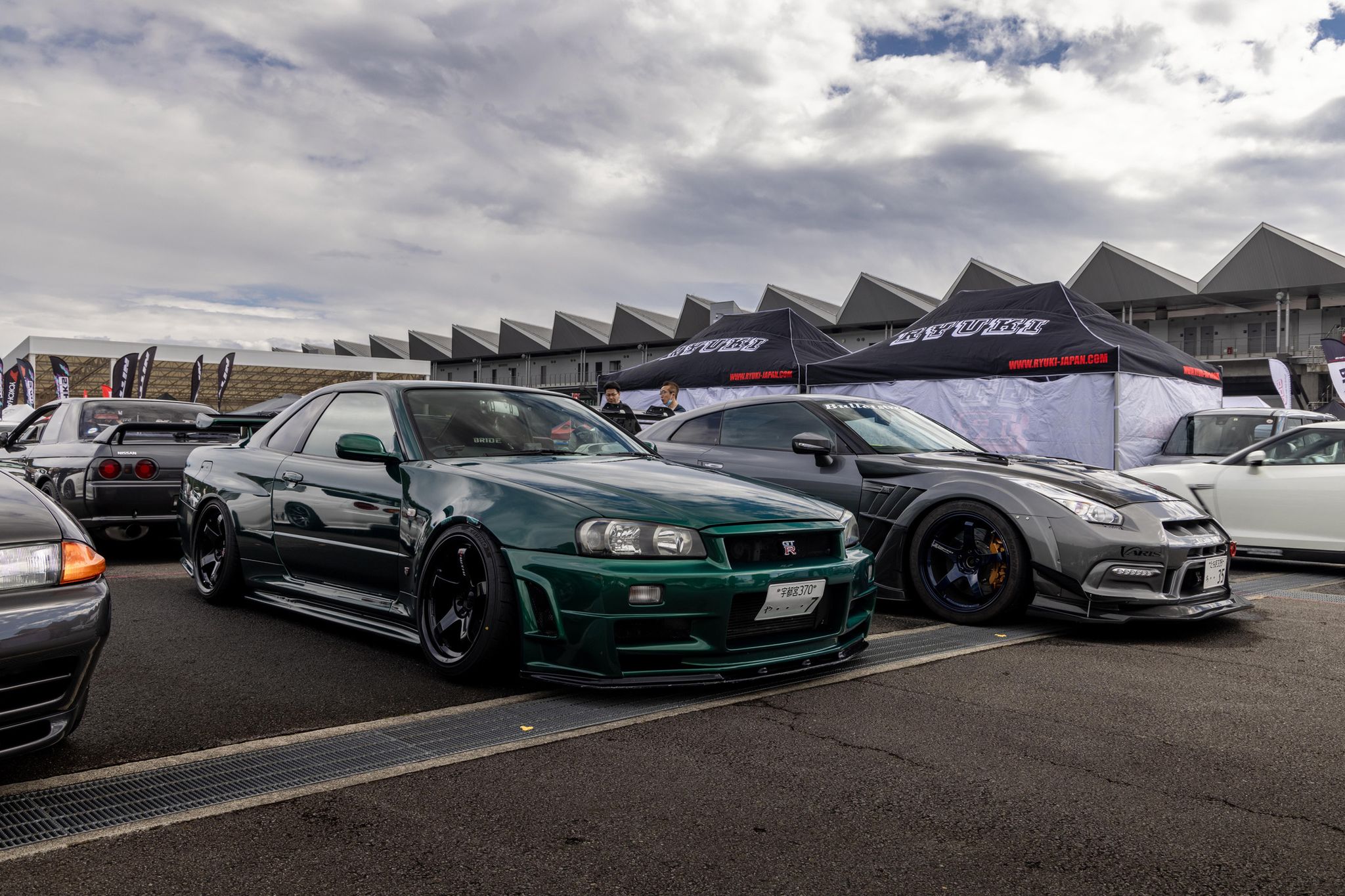
R's Meeting is not an official Nissan event, but there was plenty of factory presence. Nissan's senior vice president of global design, Alfonso Albaisa, attended with his family but took time to talk about how much he enjoys seeing the way fans have tweaked and tuned the GT-R over its 55-year life span (longer if you start from the Prince Skyline of the 1950s). For a designer, "the freeing thing about the GT-R is that it doesn't have to be beautiful," he said, pointing out the car's chunky angles and seemingly unrelated influences. "The side view is Japan; the roof is London; the rear, California. Normally, a designer would say that's confusing, but we're not chasing beauty. We're chasing presence. Each GT-R is different. It has to have a little of the brick-shaped sedan that led Porsche in the 1964 Japanese Grand Prix, but otherwise, there's nothing saying, 'This is what a GT-R is.'"
For Hiroshi Tamura, who is considered the father of the modern GT-R for his work on the R34 and the 370Z (he's known by the honorific Tamurasan even in English-speaking circles) and now serves as a brand ambassador for Nissan, the GT-R is an escape from the dull parts of daily life. "For fundamental transport, get a kei car," he said. "Nothing wrong with a kei car. Get a minivan. It's okay to be efficient. But life is not only an efficiency story. We need emotion." Tamura doesn't just speak; he acts out the story as he tells it. He hunches over, curling his arms around an imaginary steering wheel when he describes the GT-R as a mechanical suit that allows the driver to be a commander, at one with the machine, yet requires so much concentration that there's no room for the boring thoughts of everyday life. "You know the difference between humans and animals?" he asked. "Animals can't drive. To drive makes us human."
If R's Meeting represents some of the best of Japan's automaking history, then late-night scenes in Tokyo showcase the diversity of its contemporary car culture. A visit to Japan for a car enthusiast is like a trip to the Galápagos for a birder. You will see things you never knew existed, tripling your life-list entries in a single day.
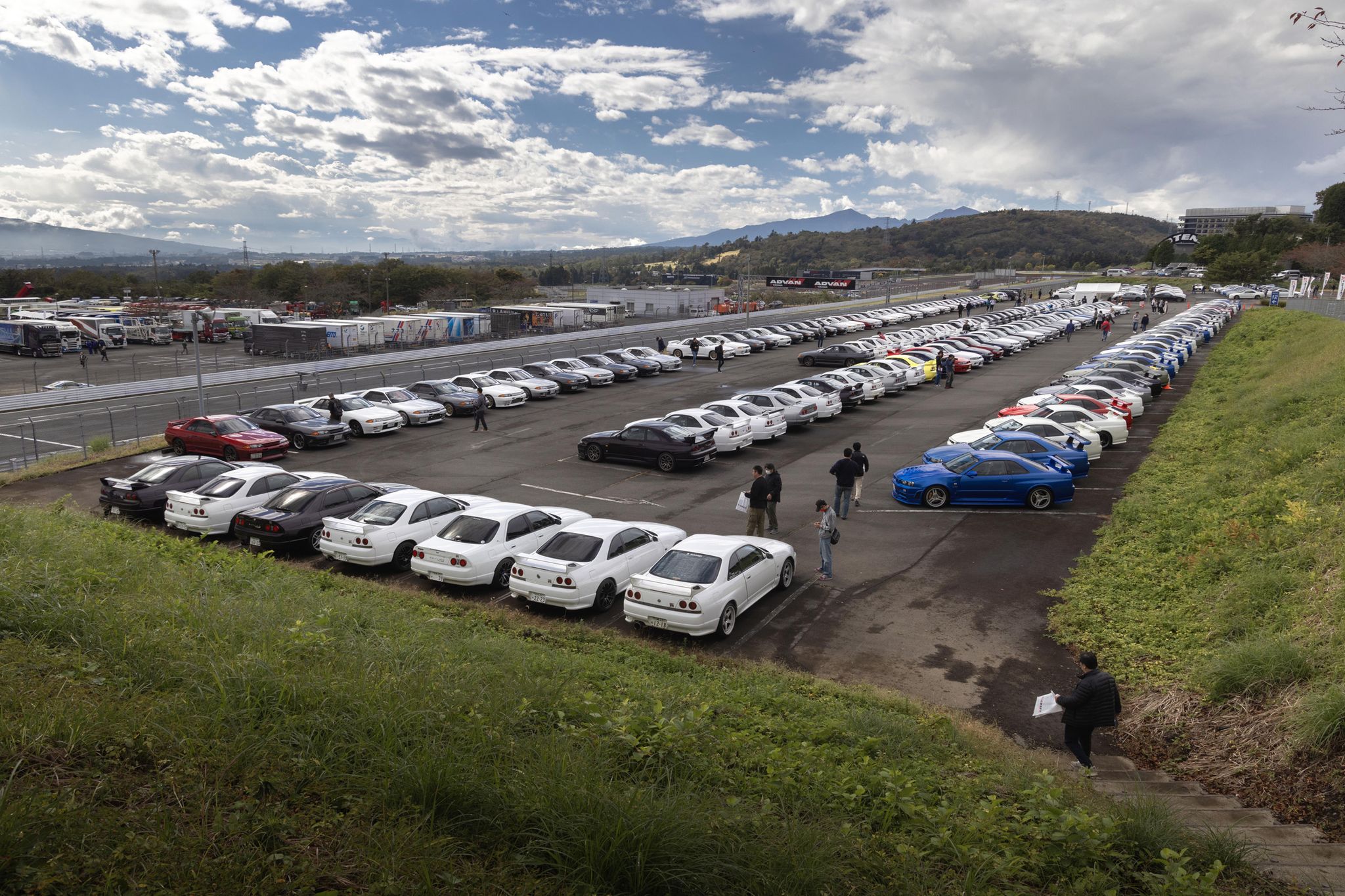
Or maybe you'll encounter something familiar in an unfamiliar place, like an American muscle car lit by the orange glow of Tokyo Tower. It arrived first as a low thump, then bubbled up into the choppy burps of a pushrod V-8. The empty parking lot lit up as a '70 Plymouth 'Cuda, as tangerine as the tower above, pulled in and came to a squeaky, wet-braked halt. "Hi," said the driver, Ishii "Mitsu" Mitsubishi, as he leaned over to unlock the passenger's door. We'd never met, but a friend of a friend of a friend had connected us after I said I wanted to explore the Tokyo car community. When Mitsu mentioned classic cars, I pictured a Nissan Fairlady Z or an early-'70s Toyota Celica. I was not imagining an American muscle machine with a 440-cubic-inch V-8 and a six-pack. "I went to school in the States, so I bought an American car," Mitsu told me as Shaffer and I squeezed into the Plymouth. "That was in the '90s. I'm 56 now," he added. "Buy an American car. It keeps you younger." Then we were on the road, roaring through tunnels, flashing past the glassy buildings alongside the overpasses, living out the Tokyo Expressway Music Rally from the Gran Turismo 7 video game—which I swore I wouldn't reference in this story, but how could I not when it was exactly like that?
Since long before this visit, I've admired Japanese art, the way the classical painters captured movement and texture with watered brush-strokes and the evolution of that stop-motion action in modern manga and anime. Then I got to Japan, and the landscape really does roll away in washes of blue and lavender. Persimmons pop like little flames against ink-black branches. The light in the city streaks and freezes like a panel out of the automotive-themed manga Shakotan Boogie . I'd thought Japanese artists were impressionists, but they're photorealists.
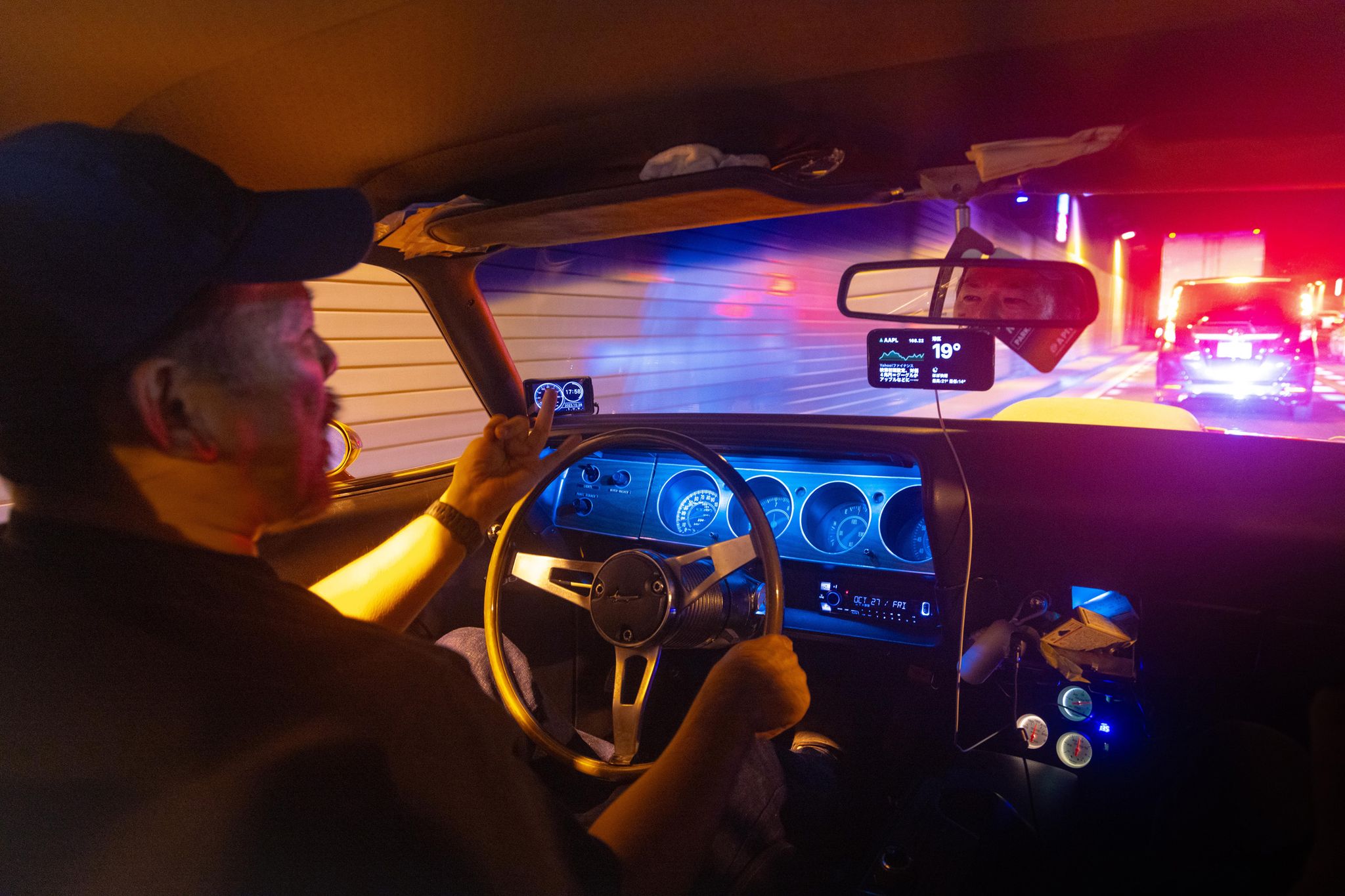
I could have happily watched the city blur through the windshield all night, but we had places to be. Our destination was the Daikoku Parking Area under the Shuto Expressway. Of all of Tokyo's automotive hubs, Daikoku is the most famous. Most evenings and weekend mornings, the lot fills with cars of every description. Exotics bedazzled with rhinestones, ground-scraping kaido racers with splitters like snowplow blades, classic Hondas, modded sport compacts—makes and models come together like wildlife around a watering hole. The challenge of attending Daikoku is that it borders a police station, so every night, the officers eventually lose patience with the crowds and send everyone home. This could happen hours into the meet or minutes, depending on the mood of the Man, so a Daikoku night is a fragile social proposition. It's fine if you drove in with your crew, because you all can just head to the next destination, but if you've somehow managed to convince a cabby to drop you off, you'll find it much harder to get one to pick you up. Daikoku's popularity might be its undoing, as stranded and ill-behaved tourists bring unwanted attention to the formerly under-the-radar meeting spot. Like influencers in a field of wildflowers, we must be respectful lest we crush what we love.
Because one never knows how long a Daikoku meet might last, the experienced gather ahead of time so they can cruise in together, park together, and get kicked out together. "Plus, you look cooler in a group," said Mitsu. We met his party at a truck stop bordering the expressway, where Kazuyoshi "Kazu" Yoshida in a 1970 Challenger and Toshiya "Toshi" Suzuki in a '71 'Cuda waited for us. A few minutes later, Ayaka Hidaka pulled up in a blacked-out '72 'Cuda; she told us it was her husband's car but looked every bit the badass behind the wheel. "Now we go to Daikoku," said Mitsu, waving his fish into a school and leading us back to the highway.
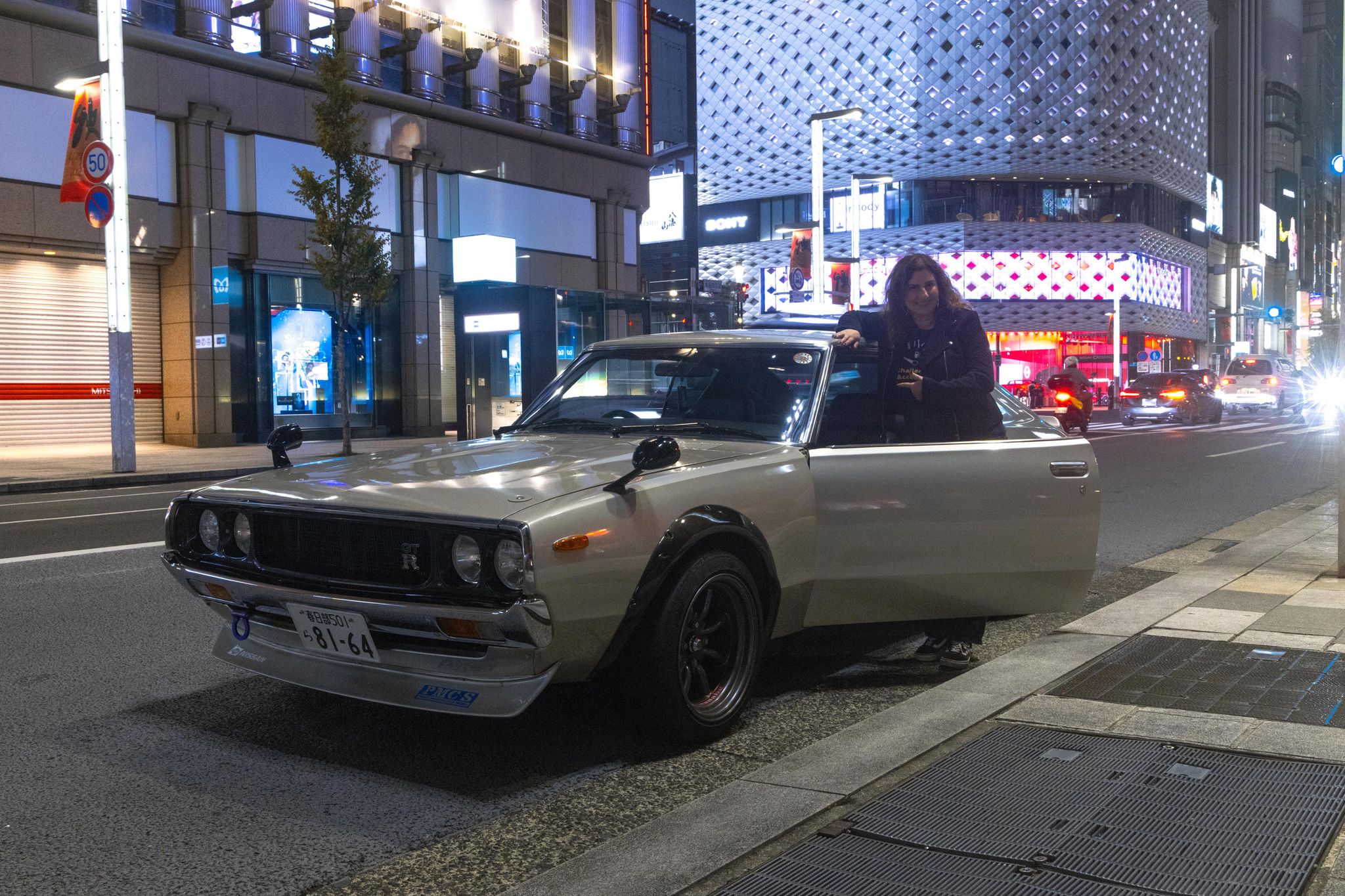
More tunnels, more lighting strobing over the long hoods and chrome trim. Our V-8 choir got a soprano addition as a Ferrari 458 blasted past. A group of little vans outlined in neon rolled by like a handful of tossed dice. The freeway split, and they headed to the right as we crossed a bridge that took us over Tokyo Bay and onto the Daikoku parking island.
There's this sound I associate with good car shows. It's not the boom and whistle of revved exhausts. It's a human sound, a belly-deep exhale encompassing admiration and respect. It means the same thing wherever you hear it: "Hot damn, look at that car!" As we rumbled into the parking lot, we heard it almost constantly. Even in Detroit, four perfect E-bodies would be a no-table lineup. In Tokyo, it was like entering a rodeo on a giraffe. Mitsu guessed there might be a hundred Challengers and Barracudas in Japan, and it felt like they were all on display that night. But ours weren't the only American cars there or the most unusual. There was a row of modern pony cars—all dropped so low you'd need a feeler gauge to measure their clearance. A red Lancia Delta Integrale sat next to a matte-blue R35 GT-R with a wing you could host a banquet on. Kazu pointed out a row of lowered Toyota s edans. "Very popular for drifting," he said. "Rear-wheel drive." The Ferrari from the tunnel drove by and threw us a rev of recognition. "The enemy," said Mitsu, without real heat.
Somehow, we managed to park all four Mopars and even find space to squeeze in a straggler, Aihara "Mori" Morihiro, in another 1970 'Cuda. Dapper in a pinstriped suit, he eyed a row of Porsche GT3s in the corner. "His day job," said Mitsu. "He sells Porsches." I never had a chance to find out how a Porsche salesman ended up in a Plymouth because the loudspeakers came on with the official police announcement: closing up, time to go. Engines fired up, scissor doors lowered, and air springs hissed as everyone politely, if not exactly hurriedly, prepared to leave. If the 'Cuda crew spun some tire on the exit, I blame the rain.
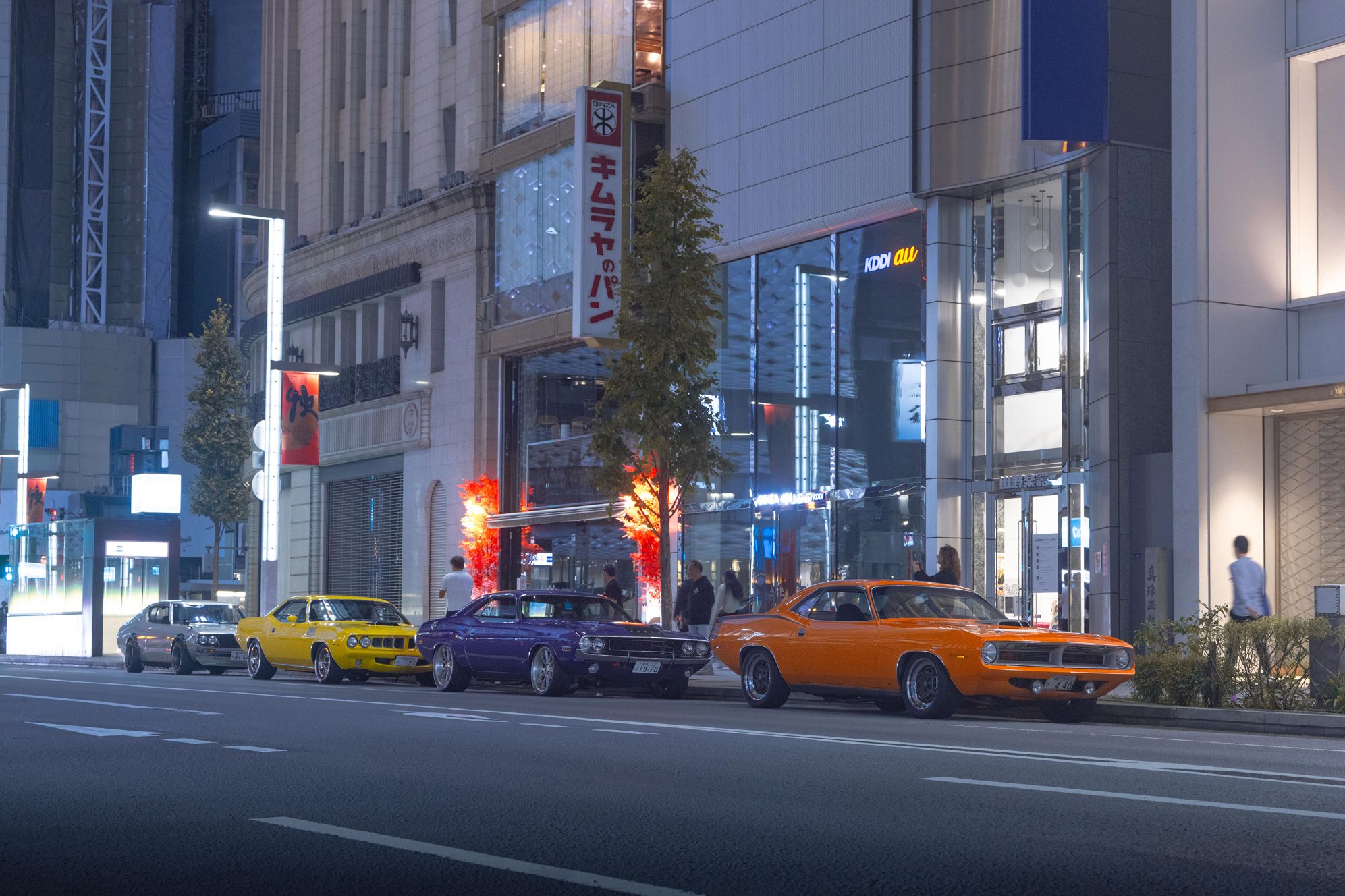
Since Daikoku often closes early, it's common practice to reconvene with your pals at a second location. For us, that was the hip neighborhood of Shibuya on the west side of Tokyo. There, we added another muscle car to our parade, this time a native: a 1971 Nissan Skyline GT-X belonging to Shinji, whose full name I never caught over the sound of muscle-car exhaust. (For the record, Shinji also owns a 'Cuda.) The Skyline fit in just fine with the school of Barracudas, balancing the latter's low boom with sassy down-shift exhaust pops.
Shibuya is all hills and narrow alleys, teenagers on scooters, and showoffs in supercars. It's a serious test of any classic car, and I was impressed that there were no issues with overheating, slipping clutches, or stumbling carbs as we sat in traffic. Car ownership of any kind is a big commitment in Japan. The expressways are all toll roads, the inspections are draconian, registration fees go up with engine displacement and a car's age, and an owner must prove they have space to park a new vehicle to register it. Add in twisty streets and busy intersections, and it's even more amazing that so many people take on the challenge of maneuvering their machines around town. The payoff is the neon wash of Yokohama in your rearview mirror as you leave Daikoku or the blur of underglow from your fellow racers as you turn the city to light trails with a push of the pedal.

Like a sleeper agent activated late in the game, Elana Scherr didn’t know her calling at a young age. Like many girls, she planned to be a vet-astronaut-artist, and came closest to that last one by attending UCLA art school. She painted images of cars, but did not own one. Elana reluctantly got a driver’s license at age 21 and discovered that she not only loved cars and wanted to drive them, but that other people loved cars and wanted to read about them, which meant somebody had to write about them. Since receiving activation codes, Elana has written for numerous car magazines and websites, covering classics, car culture, technology, motorsports, and new-car reviews. In 2020, she received a Best Feature award from the Motor Press Guild for the C/D story "A Drive through Classic Americana in a Polestar 2." In 2023, her Car and Driver feature story "In Washington, D.C.'s Secret Carpool Cabal, It's a Daily Slug Fest" was awarded 1st place in the 16th Annual National Arts & Entertainment Journalism Awards by the Los Angeles Press Club.

.css-1updq97:before{background-color:#000000;color:#fff;left:0;width:50%;border:0 solid transparent;bottom:48%;height:0.125rem;content:'';position:absolute;z-index:-2000000;} Reviews .css-1e2ieb7:after{background-color:#000000;color:#fff;right:0;width:50%;border:0 solid transparent;bottom:48%;height:0.125rem;content:'';position:absolute;z-index:-2000000;}

Lamborghini Urus SE: The Wild-Child SUV Goes PHEV

Tested: Maybach S680 Is a Relative Bargain
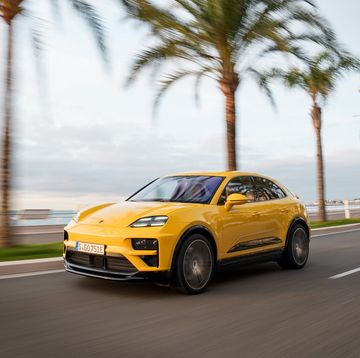
2024 Porsche Macan EV Isn't Just Quick

2024 Toyota Tacoma Hybrid Is a Spicier Taco
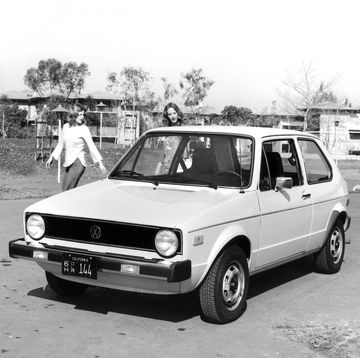
1975 Volkswagen Rabbit: A Whole Different VW
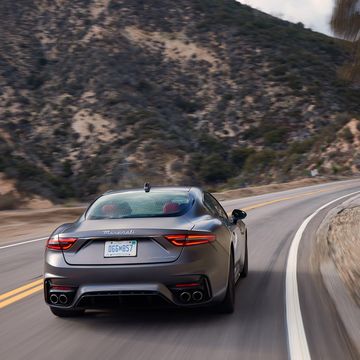
Tested: 2024 Maserati GranTurismo Trofeo
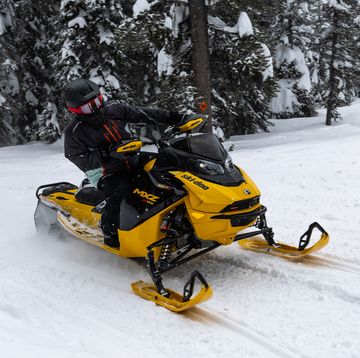
2025 Ski-Doo MXZ X-RS 850 Turbo R: Peak Snowmobile

1996 Chevrolet Corvette vs. Malibu Corvette Boat
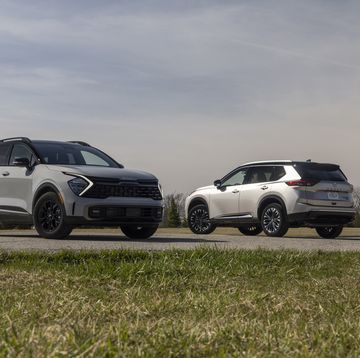
Comparison Test: Kia Sportage vs. Nissan Rogue
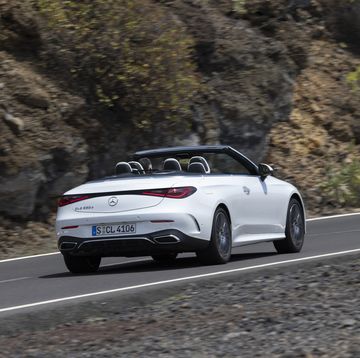
2024 Mercedes-Benz CLE Cabriolet: Sunset Cruiser
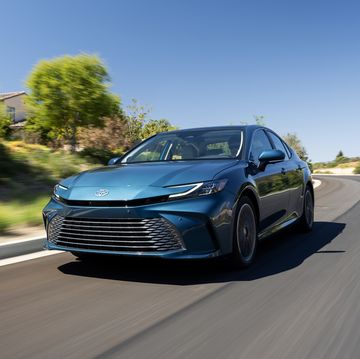
2025 Toyota Camry Carefully Evolves
- Preplanned tours
- Daytrips out of Moscow
- Themed tours
- Customized tours
- St. Petersburg
Moscow Metro
The Moscow Metro Tour is included in most guided tours’ itineraries. Opened in 1935, under Stalin’s regime, the metro was not only meant to solve transport problems, but also was hailed as “a people’s palace”. Every station you will see during your Moscow metro tour looks like a palace room. There are bright paintings, mosaics, stained glass, bronze statues… Our Moscow metro tour includes the most impressive stations best architects and designers worked at - Ploshchad Revolutsii, Mayakovskaya, Komsomolskaya, Kievskaya, Novoslobodskaya and some others.
What is the kremlin in russia?
The guide will not only help you navigate the metro, but will also provide you with fascinating background tales for the images you see and a history of each station.
And there some stories to be told during the Moscow metro tour! The deepest station - Park Pobedy - is 84 metres under the ground with the world longest escalator of 140 meters. Parts of the so-called Metro-2, a secret strategic system of underground tunnels, was used for its construction.
During the Second World War the metro itself became a strategic asset: it was turned into the city's biggest bomb-shelter and one of the stations even became a library. 217 children were born here in 1941-1942! The metro is the most effective means of transport in the capital.
There are almost 200 stations 196 at the moment and trains run every 90 seconds! The guide of your Moscow metro tour can explain to you how to buy tickets and find your way if you plan to get around by yourself.
Mayor Duggan touts NFL draft, public safety boost, junk removal plan at State of the City

Mayor Mike Duggan did not shy away from touting the NFL draft yet again as he kicked off his 11th annual State of the City on Wednesday evening at the Dexter Avenue Baptist Church on Detroit's northwest side.
Duggan anticipates similar crowds to past NFL drafts, which drew in roughly 300,000 visitors. The mayor encourages them to visit redeveloped sites shown across the nation during Detroit's bankruptcy 10 years ago, such as the Michigan Central Depot, from which he delivered his State of the City last year, and witness how much the city has changed.
"We have a chance to introduce ourselves to America," Duggan said. "The last time we were in the national spotlight on MSNBC, it was about bankruptcy and a lot of people ... when they get here, you're going to see a very different city."
The mayor dived into a long list of recreational and major developments, including: GM Factory Zero and Stellantis assembly plants; State Fairgrounds development into a transit and Amazon fulfillment center; the $3 billion Henry Ford "Future of Health" development; Hudson's site, which GM recently announced plans to move its headquarters into the city's newest skyscraper, and the Water Square residences and hotel at the former Joe Louis Arena site.
Duggan added that when he first ran for office in 2013 and met with hundreds of residents, "it hurt" to realize much of them felt the city and country forgot about Detroit.
They said "our neighborhood has been forgotten ... there's illegal dumping, nobody's picked it up. There's open abandoned houses, nobody cares. You dial 911, the police don’t show up. The ambulance doesn’t show up," Duggan said. "What they were really saying is our city has been forgotten."
Duggan praised a number of the city's accomplishments, including eliminating blight, plans to remove abandoned vehicles, demolishing and restoring abandoned homes and boosting several of the city's parks, recreation centers and public spaces in an effort to beautify Detroit.
Here are a some key takeaways:
No more 'ruin porn'
More than 10 years ago, visitors would take "ruin porn" tours in Detroit to capture some of the city's blight, including the iconic Michigan Central Depot, which was initially up for demolition in 2009.
But this year, Duggan declared those tours "canceled."
Several sites are developing, including Lear's seating plant replacing the 40-year abandoned Hudson's Motor plant; the updated and lavish Book Tower housing residences and restaurants; United Artists Theatre building converting into apartments; the Eddystone renovated into apartments; GM parts facility replacing the long abandoned AMC Headquarters; the Fisher Body Plant being restored into apartments, and one of the biggest eyesores, the Packard Plant, which is coming down this year.
Instead of blight tours, Duggan pointed to the city's upgraded amenities, including the RiverWalk, Riverside Park, Beacon Park and more.
Land Value Tax
Prior to diving into the mayor's proposed Land Value Tax plan , which would raise property taxes on vacant land, Duggan touted the city's credit rating upgrade to reaching investment grade. Higher ratings mean governments pay lower costs to borrow money for investments across the city.
As he pushes the property tax plan through the Michigan Legislature, Duggan, once again, reminded Detroiters that it would cut homeowners' property taxes by 17% and raise the tax on vacant land, including parking lots and scrapyards. However, not everybody is on board with the plan.
"I have this fight in Lansing for the Land Value Tax ... which every national economist said would be a great thing in Detroit."
Duggan was referencing a poll of economists who agreed that it would boost Detroit's economy.
Public safety improvement
Detroit, once known nationally as the "carjack city," Duggan said, saw 782 carjackings in 2013, leading Detroit officers to leave the city in "record numbers." In 2024, Detroit has been averaging two per week, he said. Duggan pointed out that former Detroit Police Chief James Craig in 2013 was a victim of carjacking. The city in the meantime provided pay increases as an incentive to stay. Detroit's homicide rate dropped from 386 in 2013 to 252 in 2023.
The city also started Project Green Light , which uses cameras installed at various businesses, aimed at deterring crime and providing video evidence when it happens near a Green Light site.
"Ten years later, Detroit is a national leader in reducing carjackings," Duggan said.
Detroit also launched a number of community violence intervention initiatives, including gunshot detection systems to prevent gun crime. Six activist groups received federal grants to research ways to prevent crime and curb gun violence. Duggan plans to request that City Council extends their contracts through 2025 after seeing gun violence dip by 44% in areas where four of the groups focused on personal interaction to deescalate situations.
Duggan also touted the city's 911 response time reaching an average of 7 minutes and 30 seconds, which is less than the national standard. The city is dispatching 42 ambulances a day, compared with 20-22 last year.
Solar energy
Duggan touted multiple solar efforts underway, including 127 municipal buildings converting from fossil-based to solar energy. The city also launched an initiative to convert 250 acres of land into solar farms . The intention would be to convert blight into a more productive use. The city would select eight neighborhoods, two of which will power streetlights.
Homeowners living within the area will receive $15,000 in energy-efficiency home upgrades. Duggan will send the first three winning neighborhoods to City Council next month for approval.
Eliminating junk vehicles
In an effort to remove abandoned vehicles, 20 of the city's municipal parking officers are ticketing inoperable or unlicensed vehicles on the street. The citation will give owners 48 hours to move the vehicle.
"2024 is the year we finally rid Detroit of the abandoned illegal vehicles," Duggan said, adding that a resident complained to him about junk vehicles in her neighborhood, suggesting it's not a common sight in the suburbs.
Owners of multiple vehicles on private property lawns will have two weeks to move them, including commercial vehicles. Owners cannot store them on lawns, even if they build a fence around it, Duggan added.
"You can't store your commercial vehicles in our neighborhoods," Duggan said.
The city ticketed 5,208 vehicles so far this year. It towed 769, he said, and 85% were moved by the owners. Residents can report abandoned vehicles on the "Improve Detroit' app.
Rising home values
Detroit home values grew by $3.9 billion since the city's bankruptcy. Black homeowners' housing wealth grew by $2.8 billion, according to a study conducted by the University of Michigan.
"That's for the people who stay. The whole city in nine years grew," Duggan said, adding in response to those who say downtown and Midtown are the only areas seeing growth, "you tell them the University of Michigan study has 4 billion reasons why that's not true."
The study indicated that since the bankruptcy, demolitions of blighted and abandoned properties, and sales by the Detroit Land Bank Authority led to a "transformation" of the city's housing stock, leading to the market recovery as home sales prices increased.
Dexter Elmhurst Recreation Center
The city is renovating the center on the west side with plans to create a recreation center. In a surprise to a longtime community activist Helen Moore , Duggan plans to name it after her.
"Tomorrow morning, Councilman Fred Durhal is putting forward the resolution, and next year, the brand new facility will be the Helen Moore Community Center," Duggan said. "There is one person who has been the champion. For the last 25 years of my life, my No. 1 critic has been Helen Moore. Every time, she brings me something, she's right."
Dana Afana is the Detroit city hall reporter for the Free Press. Contact: [email protected]. Follow her: @DanaAfana .
Trans-Siberian Railway Prices
- Trans-Siberian Railway Tickets
- Trans-Siberian Railway Ticket Booking
- Trans-Siberian Railway Car Classes
- Travel Procedure
- Trans-Siberian Railway Route
- Guides & Gadgets

Home » Prices and Trans-Siberian Tickets » Trans-Siberian Railway Prices
Ticket prices for the Trans-Siberian Railway also depend on the current ruble exchange rate.
Is the Trans-Siberian Railway expensive?
Before starting on your Trans-Siberian Railway adventure you naturally want to know what the entire trip will cost. Although this sounds like a simple question, it is pretty difficult to answer. The Trans-Siberian Railway price of travel depends on the following factors:
- Which travel class do I want to use? The price for a first class ticket is about three times the price of a 3rd class ticket
- Am I willing to buy the tickets myself and assume responsibility for the organisation of the trip?
- How many stopovers do I want to make? The more breaks, the higher the total price.
- What sort of accommodation do I want? Will it be a luxury hotel or will a hostel dormitory be sufficient?
- What tours and excursions would I like to go on?
- What is the current exchange rate for rubles?
Basically, everything from a luxury to a budget holiday is available. If you buy yourself a 3rd Class nonstop ticket at the counter, a few hundred Euros will cover the price. All you will experience is a week on the Trans-Siberian train and will see nothing of the cities on the way. There is, however, any amount of room for upward expansion. Everyone makes different choices about which aspects they are willing to spend money on. I personally prefer to save money on accommodation and railcar class, visit as many cities and do as many trips as possible. To enable better classification of your travel expenses I have contrasted two typical traveler types. In the third column you can calculate the total cost of your own journey on the Trans-Siberian Railway. Please keep in mind that these are only rough estimations and not exact prices.
The all-in costs seem fairly high at first. However, they cover everything and it is quite a long journey taking four weeks. Many people forget to consider that when looking at the list. We should also deduct the running costs for food and leisure at home. I think most visitors to this page will classify themselves somewhere between the two categories, that is around the € 2,000 – € 2,500 range. When comparing these prices with other travel packages, you get the impression that it is hardly worthwhile travelling individually on the Trans-Siberian Railway. Please keep in mind that most packages last no more than 14 days and you are herded like cattle through the most beautiful locations.
If you spend less time on the Trans-Siberian Railway you will, of course, pay less. I chose this particular travel length because I prefer not to do things by halves. If you fulfill your dream of travelling on the Trans-Siberian Railway, enjoy it and don’t rush things. But it’s up to you, of course. Try playing around with the form a bit to find the appropriate price for your trip.
- Trans-Siberian Railway Tickets »

Anacostia Riverkeeper says proposed budget shift could leave free boat tours high and dry
Kate Ryan | [email protected]
April 27, 2024, 5:46 AM
- Share This:
- share on facebook
- share on threads
- share on linkedin
- share on email
From Friday Night Fishing to free boat tours, the Anacostia Riverkeeper program is designed to acquaint D.C. residents with the river and continue cleanup efforts.
But Anacostia Riverkeeper Trey Sherard told WTOP he’s concerned about a potential move of $1.8 million from river cleanup funding, which is part of the “Budget Support Act” that could allow for legal authority to make specific revenue changes.
Under the plan, balances in dozens of dedicated tax and special purpose funds from the Riverkeeper could be shifted to the District’s General Fund.
D.C. is facing a $700 million shortfall this year — part of the $4 billion projected budget gap over the next five years.
Sherard told WTOP that $1.8 million will come from the Anacostia River Clean Up Fund.
“That fund is responsible for covering all of the free boat tours that we and other groups offer,” Sherard explained. “That fund is also responsible for funding all of our trash trap maintenance.”
Sherard said thousands of pounds of trash are taken out of those trash traps every year — and that doesn’t include other cleanups throughout the year.
While the mayor’s budget plan includes funding for a variety of environmental goals, like remediation of hazardous materials in the Anacostia River, Sherard pointed out the Anacostia River Clean Up Fund is paid for through the District of Columbia’s bag fee. That’s the nickel added to your bill if you opt to get a paper or plastic bag at the checkout counter.
Sherard said the law that created that fee stipulated that the money from the bag fee would be restricted to paying for cleaning and protecting the Anacostia River, adding that it should not be shifted to the general fund.
Other groups, including City Wildlife and the Rock Creek Conservancy, are also lobbying to keep the money from being shifted to D.C.’s general fund.
D.C. Council’s Committee on Transportation and the Environment is holding its budget oversight hearing Monday at 9:30 a.m. to discuss the plan.
Get breaking news and daily headlines delivered to your email inbox by signing up here .
© 2024 WTOP. All Rights Reserved. This website is not intended for users located within the European Economic Area.

As a member of the award-winning WTOP News, Kate is focused on state and local government. Her focus has always been on how decisions made in a council chamber or state house affect your house. She's also covered breaking news, education and more.
- 202-895-5337
- @KateRyanWTOP
Related News
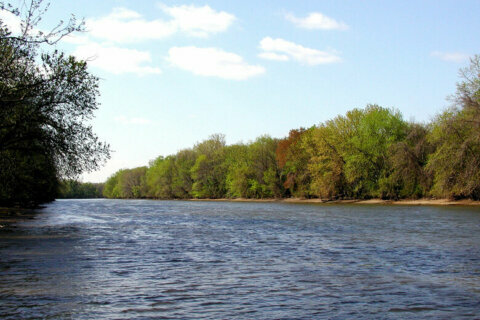
1st chance to swim in Anacostia River in 50 years scrapped (again) due to bad weather
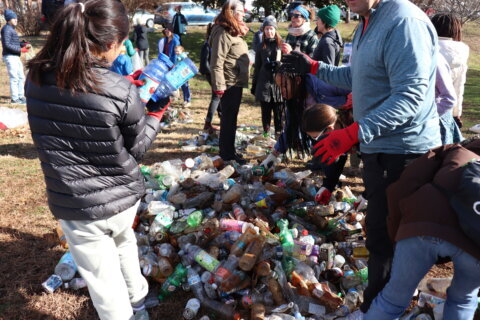
New bill aims to pull plastic bottles out of the Anacostia River

Demonstrations at GW University campus over Israel-Hamas war enter 3rd day
Recommended.
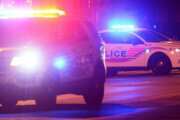
Man dead after stabbing outside Audi Field
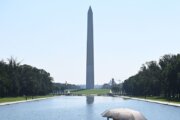
Mostly sunny. Highs in the 80s

DC region well represented at NFL Draft. Here's what you need to know about each local selected
Related categories:.

IMAGES
VIDEO
COMMENTS
The School and Public Programs Team developed a Sensory Tour for groups with blind or low vision visitors. This 2-hour tour is designed to teach visitors about the history and science of NSF NCAR using audio and tactile engagement as tools. To inquire about this exclusive experience, please call 303.497.2401 or email the School and Public ...
The NCAR visitor center is open 363 days a year. Visit weekdays 8am-5pm or weekends and holidays 9am-4pm. NCAR tours are available Mon., Wed., and Fri at noon.*. Meet your tour guide in the lobby to learn about atmospheric science and current research being conducted at NCAR. No reservations are necessary and the tour is free.
The US National Center for Atmospheric Research (NCAR / ... Public tours. The Visitor Center at the Mesa Laboratory is open to the public daily at no charge. Guided tours and self-guided tablet tours include video and audio on one of the first supercomputers built by Seymour Cray as well as NCAR's modern supercomputer fleet, ...
The pandemic gave staff at the University Corporation for Atmospheric Research (UCAR) Center for Science Education (SciEd) the time and additional motivation to create a virtual tour web app that allows anyone from anywhere to experience the excitement of NCAR, both at the iconic Mesa Lab in Boulder and at the NCAR-Wyoming Supercomputing Center ...
Take a quick tour of the National Center for Atmospheric Research, narrated by former NCAR Director Jim Hurrell.NCAR is a scientific laboratory providing res...
The Visitor Center at the NCAR-Wyoming Supercomputing Center (NWSC) in Cheyenne, Wyoming, offers informative tours and exhibits about weather, climate, supercomputing, and the broad spectrum of atmospheric research at a world-class science laboratory. ... Tours may last from 45-90 minutes and require continuous standing and walking, including ...
A guided tour of NCAR, which was established by the National Science Foundation in 1960, to provide research for scientists and engineers on the Earth's weather, climate, ... Nestled below the flatirons in Boulder, the NCAR building was designed by the noted architect, IM Pei. Today it remains a internationally renowned state of the art ...
The NCAR Trail travels west on a small mesa, drops to a broad saddle, then climbs another ridge to a water tank, before dropping into a valley to end at Mesa Trail. The National Center for Atmospheric Research (NCAR) has placed a series of interpretive signs about weather along the top portion. This rolling trail offers splendid views of the ...
Pay us a visit, and don't forget the kids. The exhibits at our two visitor centers allow the public to explore weather, climate, the Sun-Earth connection, and the importance of supercomputing, a major ingredient pushing our scientific understanding even further. Home. For the public. Visit us.
St. Vrain Valley School District students will help plant a "moon tree" Friday at the National Center for Atmospheric Research Mesa Lab, 1850 Table Mesa Drive, in Boulder, to celebrate Arbor Day ...
Tour in police patrol car through quiet Moscow residential neighborhood described; police or militia are particularly concerned with drunkenness and wide range of petty crime that is termed ...
R's Meeting is not an official Nissan event, but there was plenty of factory presence. Nissan's senior vice president of global design, Alfonso Albaisa, attended with his family but took time to ...
In addition to our standard services, Grand Russia offers tours packages to Moscow and St Petersburg. You cannot resist our Two Hearts of Russia (7 Days &6 Nights), Golden Moscow (4 Days &3 Nights), Sochi (3 Days & 2 Nights), Golden Ring (1 Day & 2 Days), and many more. As a leading travel agency specializing in the tour to Russia and Former ...
Moscow Metro. The Moscow Metro Tour is included in most guided tours' itineraries. Opened in 1935, under Stalin's regime, the metro was not only meant to solve transport problems, but also was hailed as "a people's palace". Every station you will see during your Moscow metro tour looks like a palace room. There are bright paintings ...
Here are a some key takeaways: No more 'ruin porn' More than 10 years ago, visitors would take "ruin porn" tours in Detroit to capture some of the city's blight, including the iconic Michigan ...
What tours and excursions would I like to go on? What is the current exchange rate for rubles? Basically, everything from a luxury to a budget holiday is available. If you buy yourself a 3rd Class nonstop ticket at the counter, a few hundred Euros will cover the price. All you will experience is a week on the Trans-Siberian train and will see ...
A Saturday night tram collision at Universal Studios Hollywood that left more than a dozen people injured during a tour occurred when the last car of the backlot tram crashed into a metal ...
Anacostia Riverkeeper Trey Sherard told WTOP he's concerned about a potential shift of $1.8 million from the budget for the river's upkeep and boat tours to the District's General Fund.